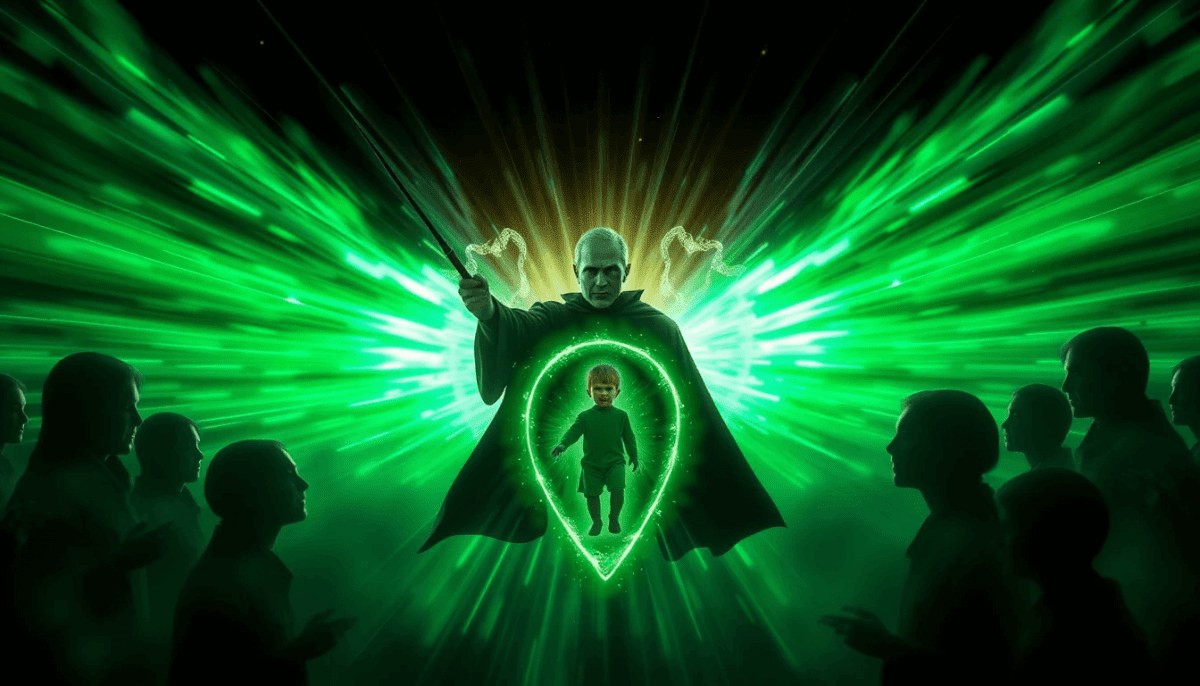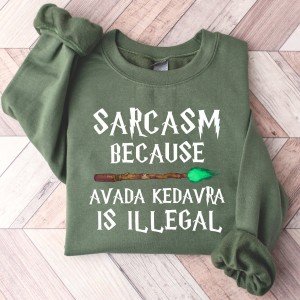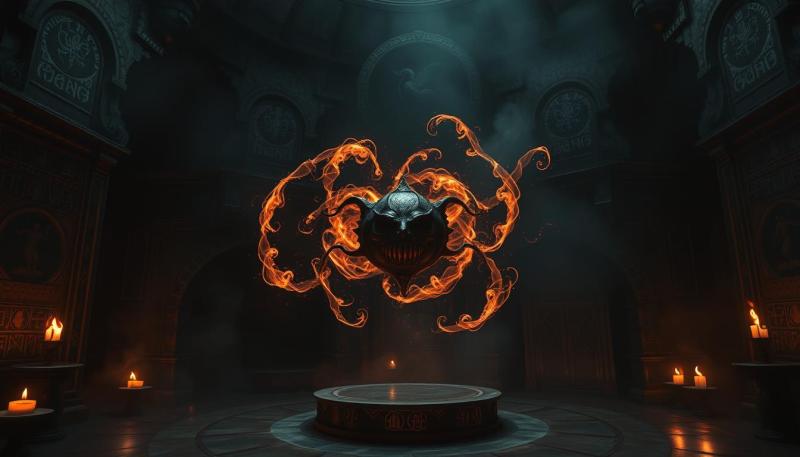In the wizarding world of Harry Potter, few magical incantations strike as much fear as the infamous Killing Curse. Known by its incantation "Avada Kedavra," this spell causes instant, painless death without leaving physical marks on the victim's body. The Killing Curse is one of the three Unforgivable Curses, carrying the strictest penalties in wizarding law when used on fellow humans.
When cast, the spell produces a distinctive green light that became synonymous with Voldemort's reign of terror. What makes this curse particularly fascinating is that throughout magical history, only one person has ever survived it - Harry Potter. His survival as an infant led to Voldemort's temporary downfall and earned Harry his famous lightning-bolt scar and the title "The Boy Who Lived."
You might be surprised to learn that the Killing Curse leaves no trace of violence, which often confuses Muggles who discover victims. The body remains completely unmarked with only the final expression frozen on the deceased's face. This clean yet terrible efficiency makes it both one of the most feared and most easily identifiable Dark spells in the magical world.
Key Takeaways
- The Killing Curse (Avada Kedavra) causes immediate death without physical damage and is classified as an Unforgivable Curse in the wizarding world.
- Harry Potter is the only known survivor of this deadly spell, protected by his mother's sacrificial love which caused the curse to rebound on Voldemort.
- Using this curse on another human carries severe legal consequences and represents one of the darkest applications of magical power.
Unforgivable Curses and the Wizarding Law
The Wizarding World maintains strict regulations against certain dark magic, with the most severe restrictions placed on spells that violate fundamental magical ethics. The Ministry of Magic classifies three particular curses as wholly unforgivable, carrying the harshest penalties in wizarding justice.
Classification of Curses
The three Unforgivable Curses were first officially classified as such in 1717. These curses include the Imperius Curse (Imperio), which forces complete control over another's actions; the Cruciatus Curse (Crucio), which inflicts unbearable pain; and the Killing Curse (Avada Kedavra), which causes instantaneous death.
The Killing Curse is particularly notorious as it produces a distinctive green flash and causes death without leaving physical marks on victims. Unlike most spells, it cannot be blocked by ordinary magical shields.
What makes these curses "unforgivable" is their intent - all three require genuine desire to dominate, torture, or kill. You cannot successfully cast these spells without truly meaning to cause harm.
During certain periods of wizarding history, such as the First and Second Wizarding Wars, restrictions on these curses were temporarily lifted for Aurors pursuing Death Eaters.
Legal Consequences and Azkaban
Using any of the Unforgivable Curses on another human being is enough to earn you a lifetime sentence in Azkaban, the wizarding prison. The Ministry of Magic enforces these laws rigorously under normal circumstances.
Azkaban, guarded traditionally by Dementors until reforms following the Second Wizarding War, represents the most severe punishment in wizarding society. The prison combines physical confinement with the psychological torture of having Dementors drain all happy memories from inmates.
Exceptions to prosecution have occurred during times of crisis. For example, during Barty Crouch Sr.'s leadership of the Department of Magical Law Enforcement, Aurors were authorized to use Unforgivable Curses against suspected Death Eaters.
It's worth noting that while these three curses receive special classification, there are other legal spells in the wizarding world capable of causing significant harm but without the same legal restrictions.
Sarcasm Because Avada Kedavra Is Illegal Sweatshirt, HP Fan Crewneck, Wizard Shirt, Magic Wand Shirt, Deatheater, BFF Sweatshirt
Show off your wizarding world spirit while keeping it witty and cozy with this fun sweatshirt!
Product information
$18.99
Product Review Score
4.26 out of 5 stars
158 reviewsProduct links
Avada Kedavra: The Killing Curse
The Killing Curse stands as one of the most feared spells in the wizarding world, known for its deadly efficiency and deep connection to dark magic.
Incantation and Impact
When cast, the Killing Curse requires the incantation "Avada Kedavra" spoken with intent. The spell produces a distinctive blinding flash or jet of green light that strikes fear in those who witness it. Unlike other harmful spells, this curse causes instantaneous and painless death without leaving physical marks on the victim's body.
The power behind the Killing Curse comes from the caster's intent and magical ability. You need more than just the correct words - you must genuinely desire to cause death and possess sufficient magical power to channel this intention.
When the curse hits its target, death is immediate. There is no trace of violence left on the body, making it particularly sinister as the cause of death appears mysterious to those unfamiliar with magic.
Historical Usage and Voldemort
The Killing Curse was classified as one of the three Unforgivable Curses in 1717, with the strictest penalties attached to its use. Using this spell on another human being earns you a one-way ticket to Azkaban prison.
Lord Voldemort became notorious for his frequent use of the Killing Curse. He wielded it against countless victims, including Harry Potter's parents, James and Lily Potter. Voldemort's reliance on this curse demonstrated his complete disregard for human life.
When Voldemort attempted to kill baby Harry, something unprecedented occurred. The curse rebounded due to Lily Potter's sacrificial protection, destroying Voldemort's physical form while leaving Harry with only a lightning-shaped scar. This event marked Harry as "The Boy Who Lived."
Countering the Curse
The Killing Curse is nearly impossible to defend against through conventional magical means. There is no known counter-curse that can neutralize it once cast. Your best option is to physically dodge the spell or block it with a solid object.
Albus Dumbledore demonstrated exceptional skill during his duel with Voldemort at the Ministry of Magic by animating statues to intercept the curse. This strategy doesn't negate the spell but prevents it from reaching its intended target.
The only known protection against the Killing Curse is sacrificial love. When someone willingly dies to protect another, they create a powerful magical shield. This rare form of protection saved Harry twice - first through his mother's sacrifice and later through his own willingness to die to protect others during the Battle of Hogwarts.
Some wizards with extraordinary reflexes, like Harry with his Quidditch training, can avoid the curse through quick movement, making agility a crucial survival skill when facing dark wizards.
Harry Potter Wand - Noble Collection, 14in
Unleash your inner wizard with this beautifully detailed wand that brings magic to life
Product information
$14.97
Product Review Score
4.23 out of 5 stars
206 reviewsProduct links
Moral Implications and Ethical Use of Dark Arts
The moral complexities of Dark Arts in the Harry Potter universe raise profound questions about power, intent, and corruption. These forbidden spells challenge wizards' ethical boundaries during both personal conflicts and large-scale warfare.
Dark Arts in Wizard Duels
In wizard duels, the ethics of using Dark Arts becomes a defining character choice. When Harry Potter used Sectumsempra against Draco Malfoy, he faced immediate regret despite not knowing the spell's full effects. This highlights how even accidental use of Dark Magic carries moral weight.
You'll notice that skilled duelists like Dumbledore refuse Dark Arts even when facing lethal threats. During his legendary duel with Gellert Grindelwald, Dumbledore relied on defensive magic rather than matching dark with dark.
The Expelliarmus disarming spell became Harry's signature move, representing his moral stance against deadly force. This choice contrasts sharply with Death Eaters and Lord Voldemort, who freely used Unforgivable Curses in combat.
Usage in Wizarding Wars
During both Wizarding Wars, the ethical boundaries around Dark Arts became increasingly blurred. The Ministry of Magic temporarily legalized Unforgivable Curses against Death Eaters during the First Wizarding War, demonstrating how extreme circumstances can compromise moral standards.
Voldemort's forces used the Imperius Curse to infiltrate the Ministry and the Cruciatus Curse to torture opponents like the Longbottoms. Bellatrix Lestrange's sadistic use of torture spells revealed how Dark Arts corrupt the user's humanity.
You can see the ultimate moral cost in Voldemort's creation of Horcruxes - each requiring murder and splitting his soul. By the Battle of Hogwarts, the ethical divide was clear: those willing to use killing curses versus those who fought to protect without corrupting themselves.
Cultural and Mythological Origins of Magical Curses
The deadly curses in the wizarding world draw from ancient traditions and linguistic roots that span multiple cultures. These connections help explain why certain spells carry such power and why their use is heavily restricted or forbidden.

Influence of Real-World Mythology
The concept of deadly curses isn't unique to the wizarding world but has roots in ancient mythologies. The Basilisk in Harry Potter connects to Greek and Roman myths, where this creature could kill with just its gaze. This reflects how deadly magic often draws from primal human fears.
When you examine the Unforgivable Curses that Alastor Moody demonstrates in class, you'll notice they mirror historical beliefs about dark magic. Ancient cultures believed certain words held deadly power when spoken with intent, similar to how death eaters use the Killing Curse.
These mythological connections add depth to the wizarding world's magical system. They show how Rowling integrated cultural fears of death and control into her fictional magic.
The Role of Language in Spells
The language of spells, particularly deadly ones like "Avada Kedavra," carries significant weight. This killing curse originates from Aramaic, an ancient language where the phrase meant "let the thing be destroyed." This etymology shows how ancient languages add authenticity and power to incantations.
When you cast spells in the wizarding world, pronunciation matters tremendously. As Hermione often reminds her friends, precise diction can mean the difference between success and disaster with any incantation.
The three Unforgivable Curses demonstrate how language channels intent. Each spell's wording directly relates to its effect - controlling, torturing, or killing - showing the direct connection between word and magical outcome.







